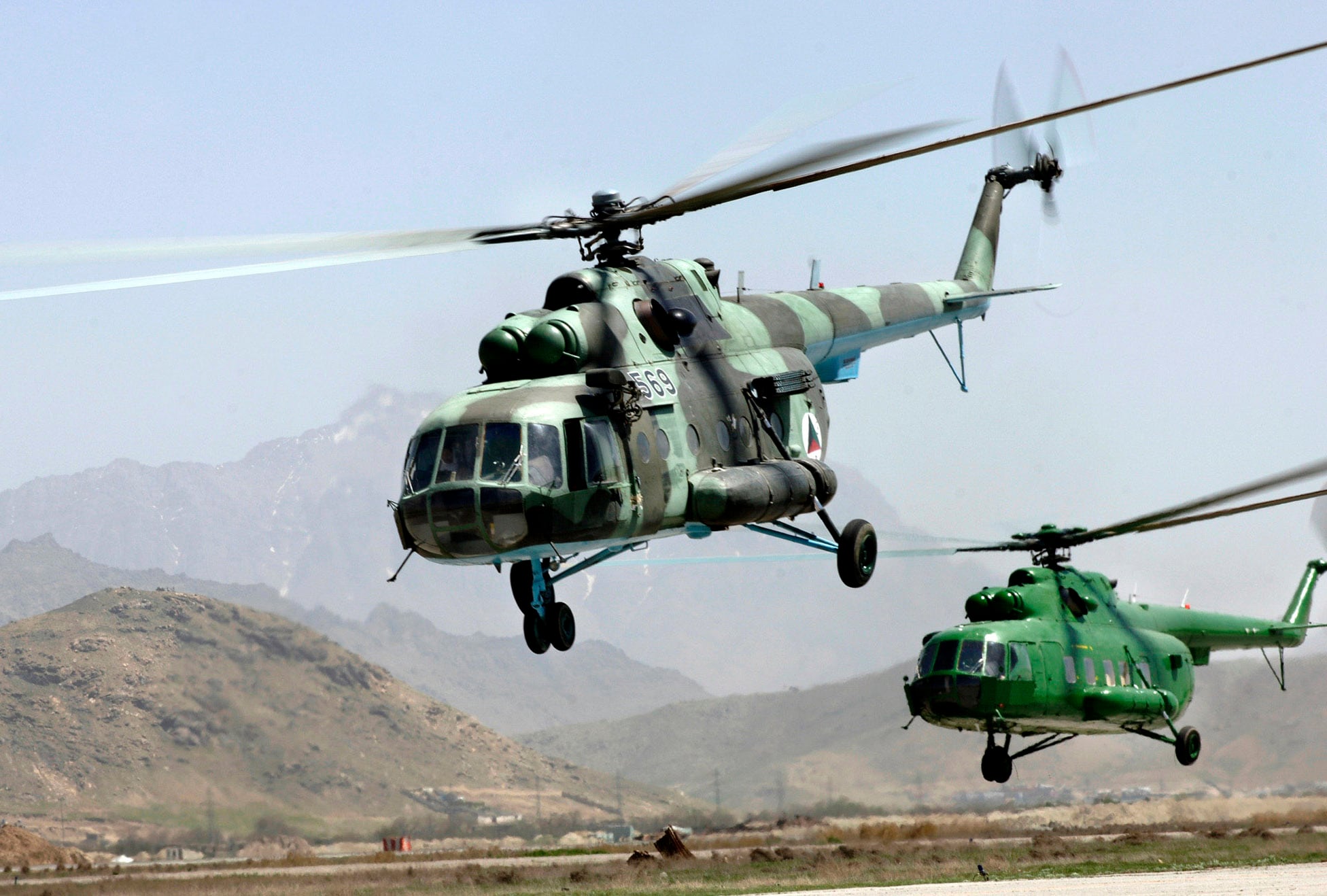Speaking before lawmakers on Capitol Hill Thursday, Gen. John Nicholson, the top commander of U.S. and NATO forces in Afghanistan, described the Afghan air force as a vital component to breaking the stalemate between Afghan and Taliban forces.
"Offensive capability is what will break the stalemate in Afghanistan," Nicholson said. "The key offensive capabilities for the Afghan security forces are their special forces and their Air Force."
To bolster that capability, the U.S. government is considering an initiative to replace Afghanistan's current fleet of Russian Mi-17s with modified UH-60 Black Hawks designed to handle the formidable mountainous terrain in Afghanistan.
Afghanistan’s Mi-17s have been instrumental in providing troop transport, heavy lift, rescuing wounded troops on the battlefield, all capacities essential for maintaining the Afghan army’s high operation tempo as it battles a resurgent Taliban threat.
However, the aging helicopter has been described as "in a state of steady decline due to higher-than-anticipated utilization rates and accelerating attrition," according to a report from the Special Inspector General for Afghan Reconstruction.
The reason for the poor state of Afghanistan’s Mi-17s, defense officials say, is that the size of the fleet was originally determined back in 2009, at a time when much of Afghanistan’s air support and heavy lift was being filled by international forces.

Afghan National Air Corps MI-17 helicopters take off in a formation practice. Air Force mentors assigned to Defense Reform Directorate Air Division under Combined Security Transition Command - Afghanistan provide guidance to soldiers with the Afghan Maintenance Operations Group.
Photo Credit: U.S. Air Force photo Tech. Sgt. Cecilio M. Ricardo Jr.
The current batch of the 46 transport helicopters are no longer adequate to meet the growing demand for air support by Afghanistan’s forces, as they struggle to take over the reins for their own security from NATO and U.S. forces..
The proposal to swap the lumbering Russian helicopter with U.S. made Black Hawks was called "critical to offensive operations" by Nicholson.
The DoD found that the UH-60 would be a more viable long-term solution given the current overuse and attrition problems and cost overruns with the Mi-17, and would solve legal issues surrounding the use of DoD funds to procure spare parts and equipment to maintain the old Russian helicopters, according to a Defense Department spokesperson.
"Transitioning the Afghan fleet will also provide interoperability with U.S. forces and advisers," the DoD official added.
The Defense Department has requested roughly $815 million dollars to bolster the Afghan air force's offensive and lethal capabilities. Those funds include the purchase and modification of 53 UH-60 Black Hawks and 30 additional armed MD-530 attack helicopters, six more A-29 fixed wing turboprop attack aircraft, five AC-208 fixed wing aircraft, an armed variant of the C-208s currently in use by the Afghan Air Force, according to a DoD spokesperson.
Training Afghan pilots to fly the new U.S. helicopters is expected to last only 8-12 weeks, many of the skills already borne by current Mi-17 pilots are transferable to the Black Hawk, which should allow for a smooth transition, a Pentagon official said.
The Defense Department expects that Afghan forces will be able to field the new U.S. helicopter within two years after funding is appropriated.
Shawn Snow is the senior reporter for Marine Corps Times and a Marine Corps veteran.





